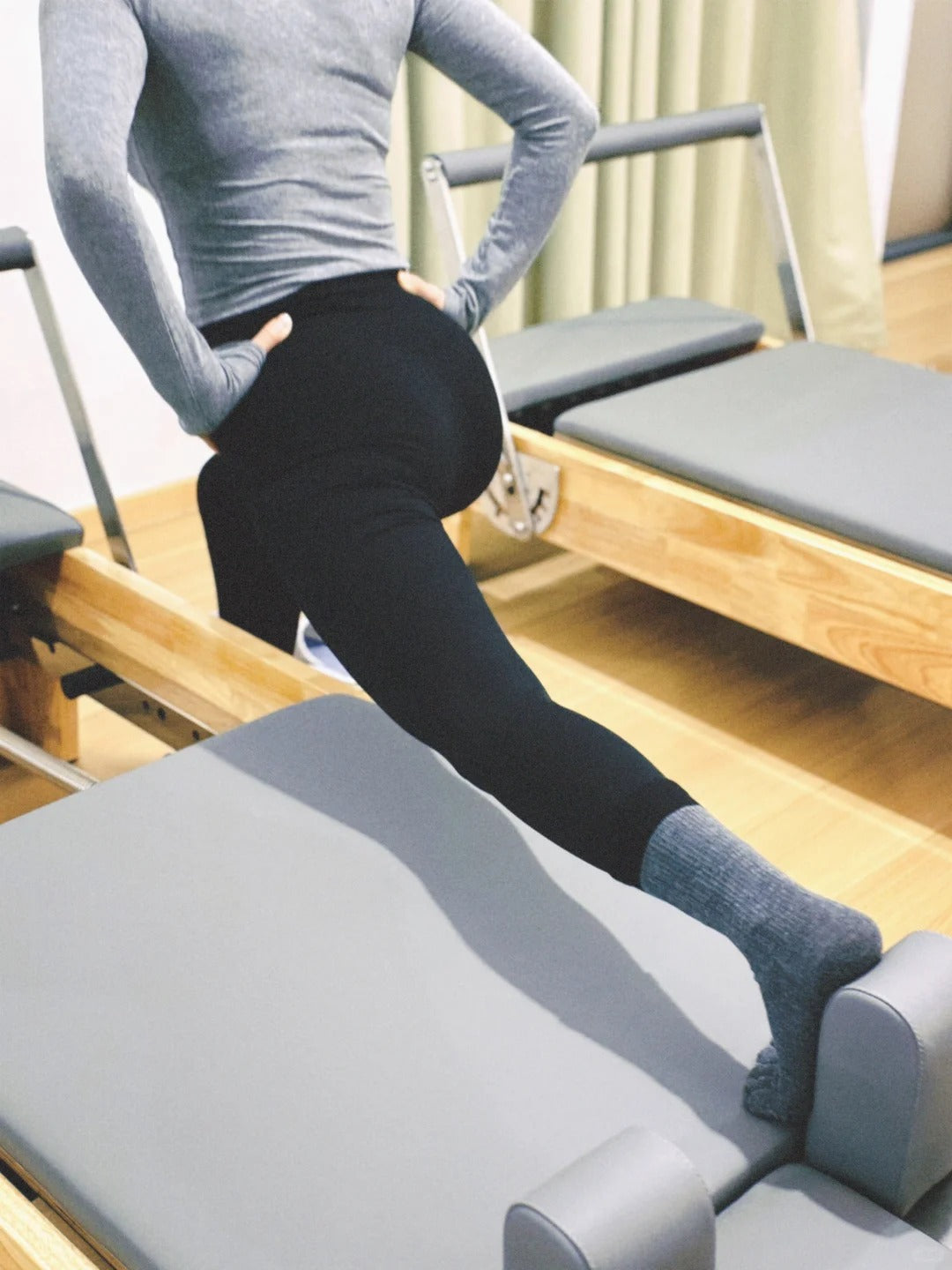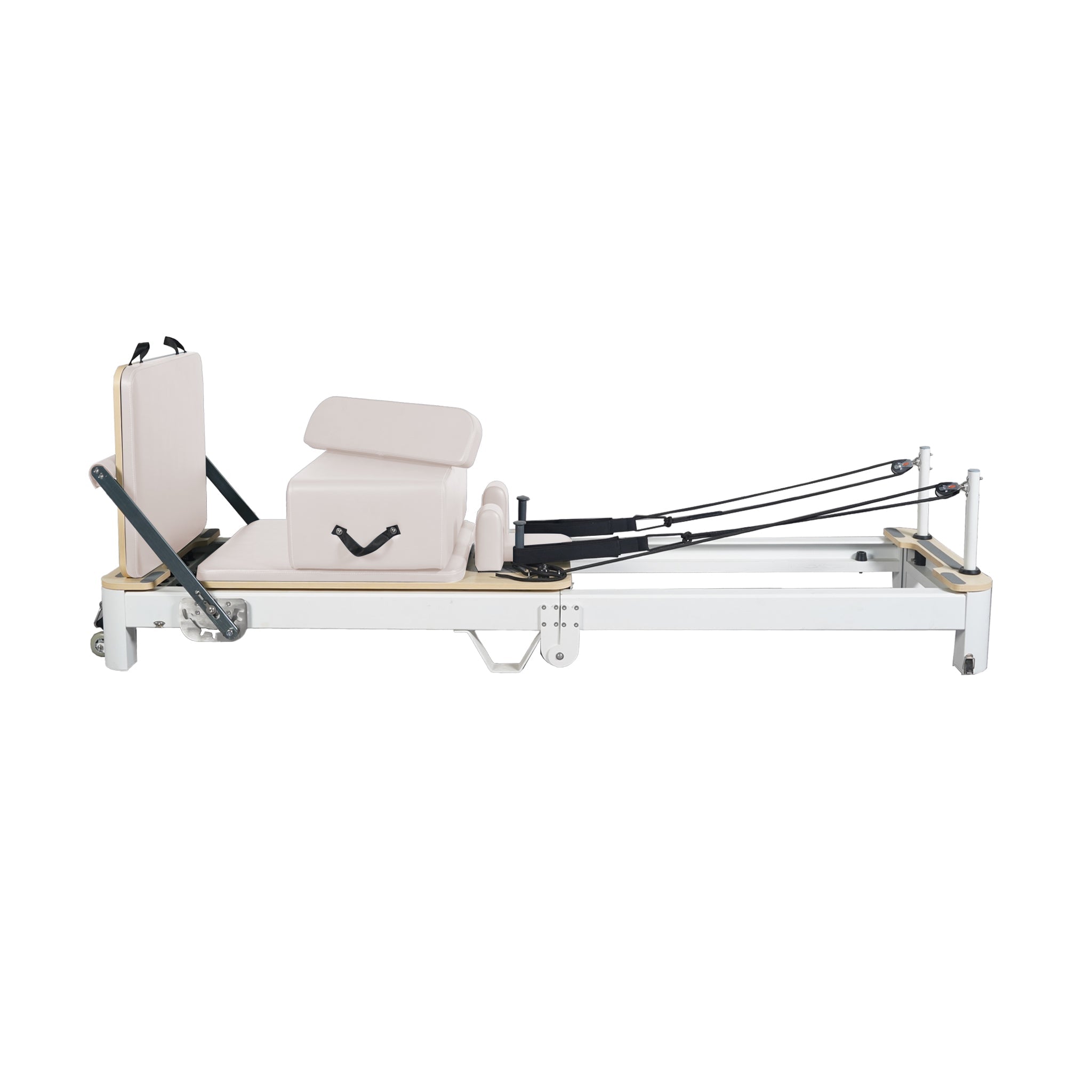Height, Angle, and Spring Tension Guide
No two bodies are the same. Some people are tall with long legs, while others are petite with shorter limbs. Some have strong upper bodies, others may be recovering from injuries. That’s the beauty of the Pilates Reformer—it’s built to adapt.
To get the most out of your Reformer training, it's crucial to adjust the machine according to your body type. From the footbar to the headrest and spring resistance, here’s a simple guide to help you find your ideal setup.
1. Footbar Position: Match Your Leg Length and Pelvic Alignment
Taller users / longer legs: Move the footbar further away to allow full leg extension without over-compressing the knees.
Shorter users / shorter legs: Bring the footbar closer in to avoid overreaching and straining the lower back.
The footbar affects your pelvic angle and spine alignment. Incorrect placement can create pressure in your lower back.
2. Headrest & Shoulder Rests: Support the Neck and Shoulders
Taller users: Try raising the headrest to maintain a neutral neck position.
Shorter users: You may prefer the headrest flat, especially during supine exercises.
Wide/narrow shoulders: Use adjustable shoulder rests or place foam pads/blocks for better comfort and support.
Goal: Maintain a straight alignment from head to spine without shrugging or straining the neck.
3. Strap (Rope) Length: Control the Range of Motion
Short arms or legs: Shorten the ropes so that the straps stay taut throughout the movement.
Longer limbs: Lengthen the ropes to avoid restriction and promote smoother extension.
If your Reformer has rope stoppers or color-coded clips, mark your personalized setting for quick adjustments.
4. Spring Tension: Adjust According to Your Strength and Body Mass
Lighter or smaller users: Start with 1–2 lighter springs to focus on control and precision.
Heavier or stronger users: Use 3–4 springs for more resistance and muscle challenge.
Core control or rehab focus: Reduce resistance to encourage better body awareness and stability.
More resistance isn't always better. Too much tension can cause compensations and reduce control.
5. Body Proportion Tips: Fine-Tuning for Comfort and Alignment
Long torso: Raise the headrest or add a small pillow under the upper back for support.
Long legs: Adjust the footbar or jumpboard further out to prevent lumbar compression.
Curvier body types: Use cushions under the pelvis or back to enhance support and stability.
Bonus Tip: How to Track and Save Your Settings
Use colored tape or markers to label your ideal footbar and rope positions.
Take photos of your setup for easy reference.
Always double-check your configuration before each session, especially if you share your Reformer.
Final Thought: The Reformer Should Fit You — Not the Other Way Around
With just a few thoughtful adjustments, your Pilates Reformer becomes a tool that supports your unique structure and training goals. A well-adjusted machine leads to smoother movement, safer posture, and better results.
Not sure which model is right for you? Visit our website to explore Reformers that fit you.



Palikite komentarą
Visi komentarai yra moderuoti prieš paskelbiant.
Ši svetainė apsaugota „hCaptcha“, taip pat taikoma „hCaptcha“ privatumo politika ir paslaugos teikimo sąlygos.